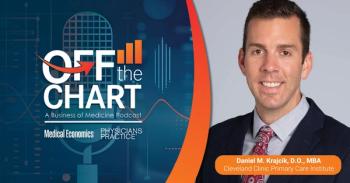
Health care fraud investigations net $1.72B for 2022
HHS, DOJ say COVID-19 was a factor in enforcement during report time period.
Health care fraud tallied up to more than $1.72 billion for fiscal year 2022, according to the U.S. Department of Health and Human Services’ Office of Inspector General (HHS-OIG).
The department published its
The 2002 fiscal year efforts netted $1.7 billion returned to the federal government or paid to private person. Of that, the Medicare Trust Funds received $1.2 billion, while the Centers for Medicare & Medicaid Services received $126.1 million.
The COVID-19 pandemic still had lingering consequences on the HHS and DOJ fraud enforcement efforts for the report period, running from Oct. 1, 2021, to Sept. 30, 2022.
“Unique factors associated with the pandemic, such as court closures, interrupted or slowed criminal and civil enforcement and other HCFAC activities,” the report said. “Consequently, recoveries, disallowances, and restitutions covered by this reporting period are lower compared to recent years.”
By the numbers
In fiscal year 2022, DOJ:
- Opened 809 new criminal health care fraud investigations.
- Filed more than 419 cases involving 680 defendants.
- Oversaw convictions of 477 defendants for health care fraud related crimes.
- Opened 774 new civil health care fraud investigations.
- The FBI also disrupted more than 499 criminal fraud organizations, dismantling the “criminal hierarchy” of more than 132 fraudulent enterprises.
In the same time, HHS-OIG:
- Investigated 661 people or entities allegedly committing crimes involving Medicare and Medicaid.
- Filed 726 civil actions including false claims, unjust enrichment actions, and civil monetary penalty settlements.
- Excluded 2,332 people and entities from participating in Medicare, Medicaid or other federal health care programs. Of those, 983 were based on criminal convictions for crimes related to Medicare and Medicaid; 433 involved other government health care programs; 305 were for beneficiary abuse or neglect; and 372 involved state health care licensure revocations.
Return on investment
HHS and DOJ spent more than $1.19 billion on the enforcement efforts. Largest allocations for fraud investigation go to CMS ($628.64 billion) and OIG ($330.66 billion).
The report said the HCFAC return on investment (ROI) over from 2020 to 2022 is $2.90 returned for every $1 spent. ROI varies from year to year so the federal regulators use a three-year average to evaluate effects.
The feds said the ROI does not include certain intangibles that deter people from attempting or continuing health care fraud.
“Civil and criminal enforcement that stops ongoing fraud saves the Program from future losses,” the report said. “Even actions that do not result in recoveries, for example, a search warrant, an indictment, or an arrest, may prevent the defendant from continuing to defraud Federal health care programs.
“Therefore, this ROI calculation relies on actual recoveries and collections, and does not represent the effect of preventing future fraudulent payments,” the report said. “Further, the threat of oversight alone can have a sentinel impact that deters future bad actors from defrauding Medicaid, Medicare, and other Federal health care benefit programs.”
All kinds of schemes
The 139-page report did not name people, but did name some businesses in pages with dozens upon dozens of health care fraud schemes ranging from clinics to COVID-19, diagnostic testing, pharmaceuticals, durable medical equipment, genetic testing, home health, hospice care, hospitals, laboratory testing, managed care, medical devices, nursing homes, pharmacies, physical therapy, physicians, prescription drugs and opioids, psychiatric and psychological testing and services, substance use treatment, and telemedicine fraud.
Newsletter
Stay informed and empowered with Medical Economics enewsletter, delivering expert insights, financial strategies, practice management tips and technology trends — tailored for today’s physicians.















